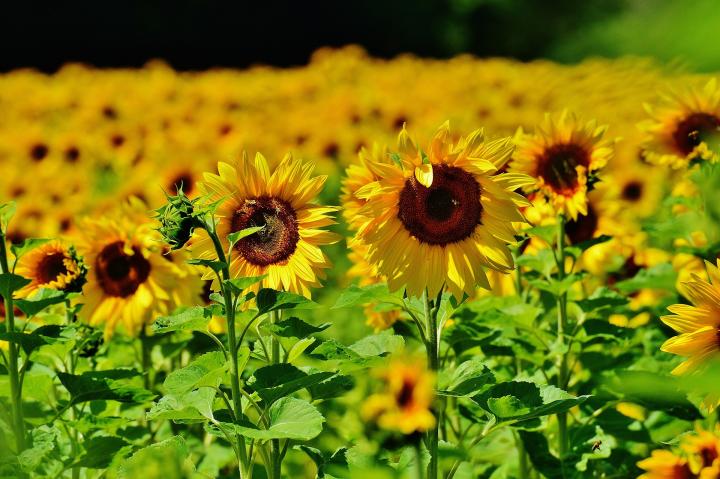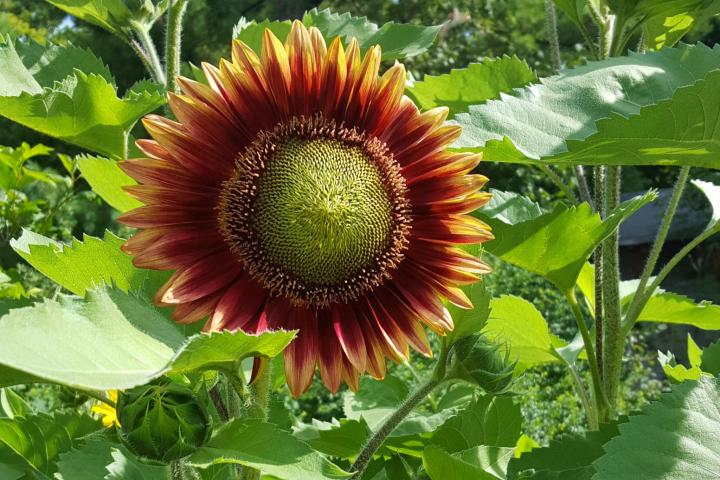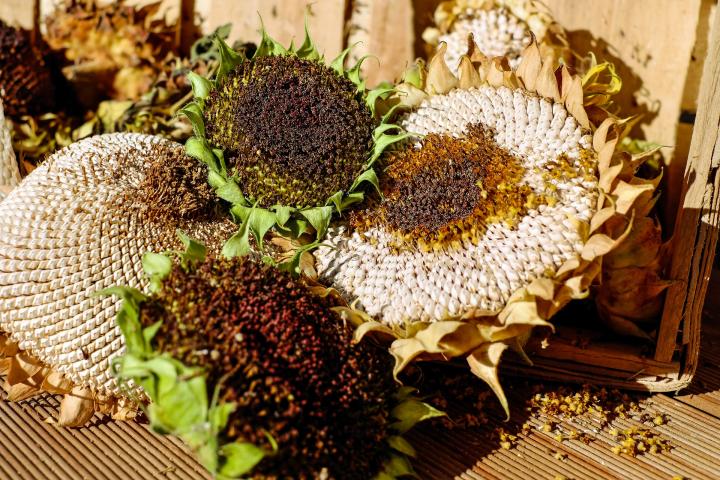
How to Plant, Grow, and Care for Sunflowers
Just one ounce of sunflower seeds contains about 6 grams of protein and 14 grams of oils. The fats are almost entirely unsaturated with 9g of polyunsaturated and 3g of monounsaturated fats per ounce (NSA). The oil is high in linoleic acid and is a good source of vitamin E.
- Some varieties produce small black seeds that are used in cooking oil, margarine, cosmetics, and animal feed; they are the best sunflower seeds for attracting the greatest variety of songbirds.
- The bigger, striped seeds are grown for snacking and as an ingredient in bread and health foods. They, too, are used for feeding birds, especially larger species, such as jays and mourning doves.
How to Roast Sunflower Seeds
Re-soak seeds overnight in salted water. Run through a strainer and dry on a layer of paper towels.
Bake for 25 to 30 minutes at 325 degrees on a baking sheet. Seeds should be spread out in a single layer. Stir frequently during the baking and remove seeds when they look slightly browned. Don’t burn!
That’s it! You can all some olive oil, salt, spices to your roasted seeds if you wish.
Or, you can also make suet cakes for the winter birds! See how to make suet.
ADVERTISEMENT
I had several sunflowers that grew wild this year. Will they come back next year or do I need to harvest the seeds and replant in the Spring?
I have never tried to grow sunflowers but want to now. I have 5 acres, most full sun in WV. When is best time to plant? Can I do now in Sept? I have checked and cannot find answer to my question. Thank you in advance for any assistance. :)
They are an annual flower, which means that they will only last for one growing season (spring to fall). Therefore, the best time to sow sunflower seeds is in the early spring—likely around April in your area!
I have trouble with my sunflowers bending over by the flower and then falling off. What am I doing wrong? They don't look up at the sun. They just hang down. Even the stocks start to bend over.
Will my sunflowers re-appear next summer & should I let them die down?












Comments